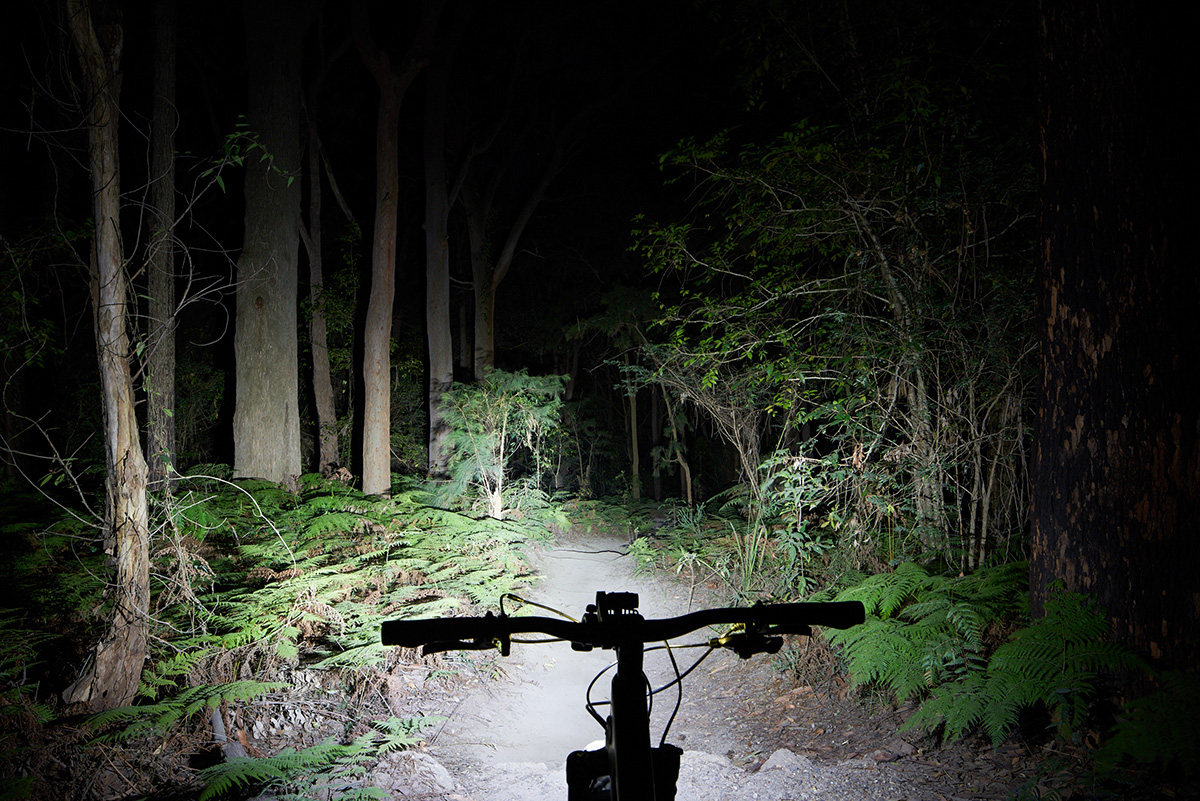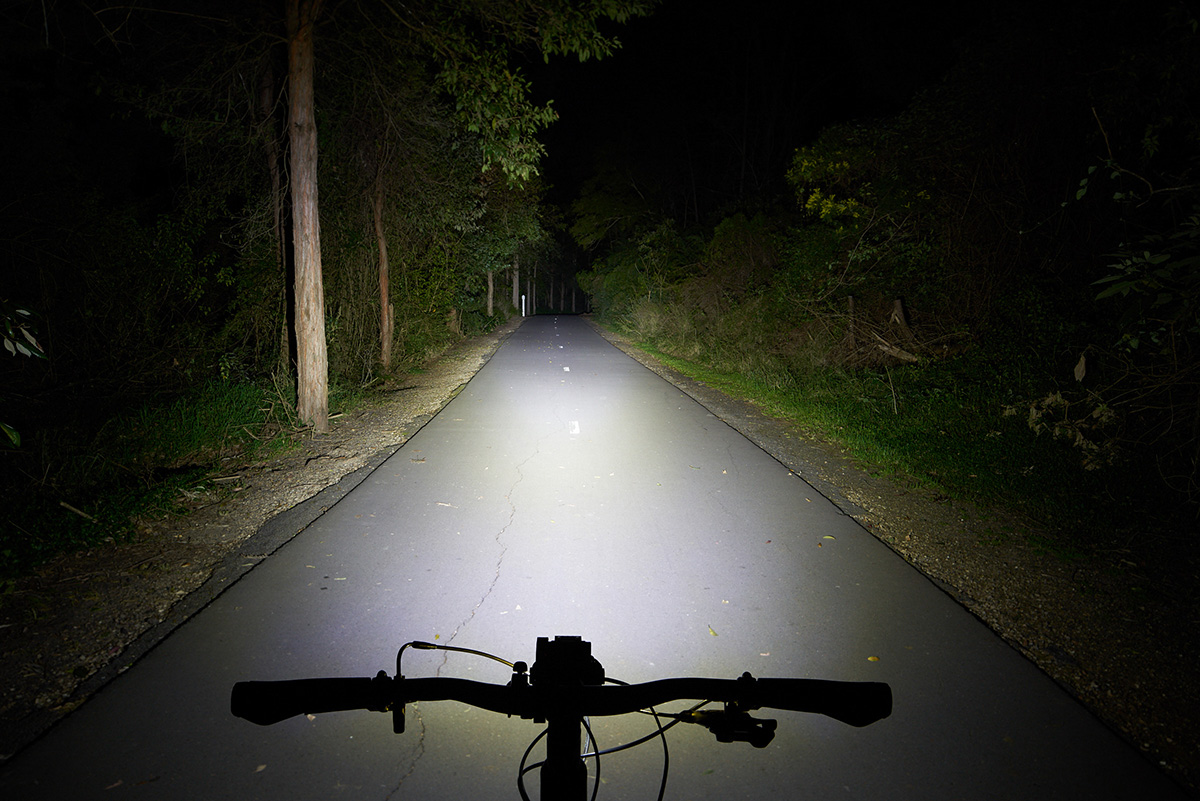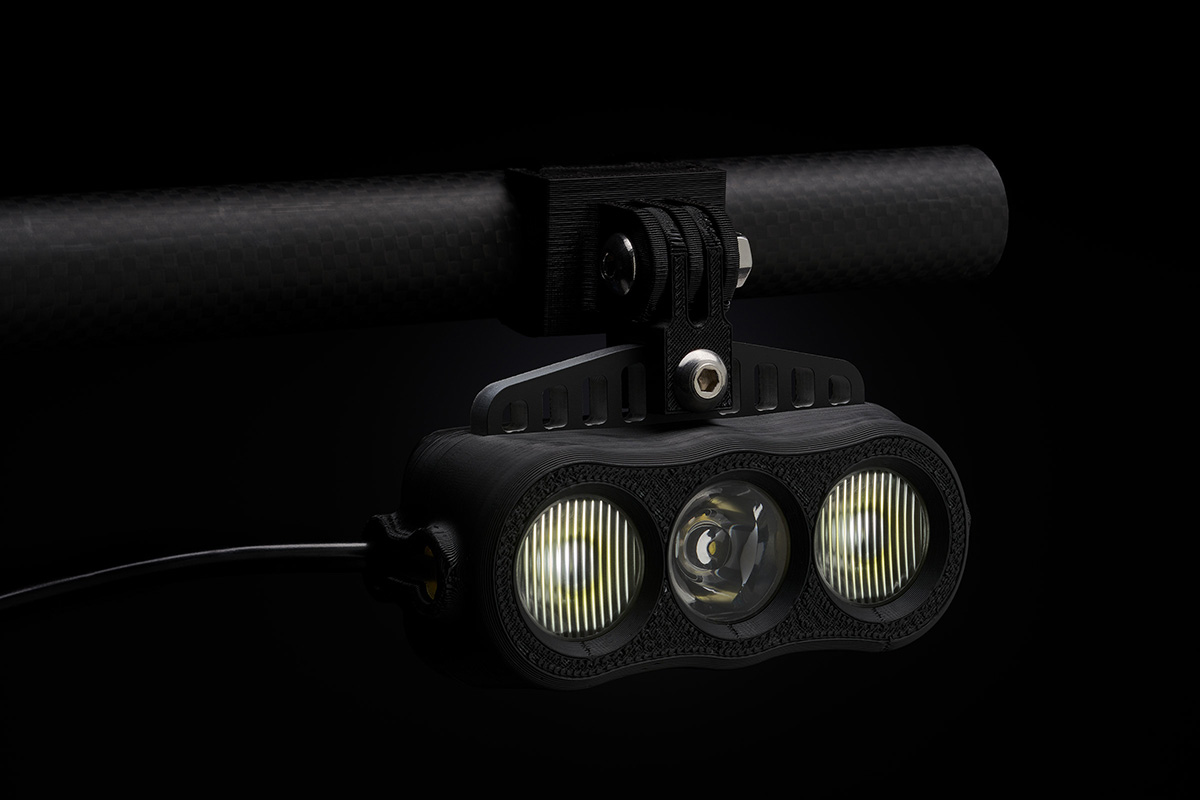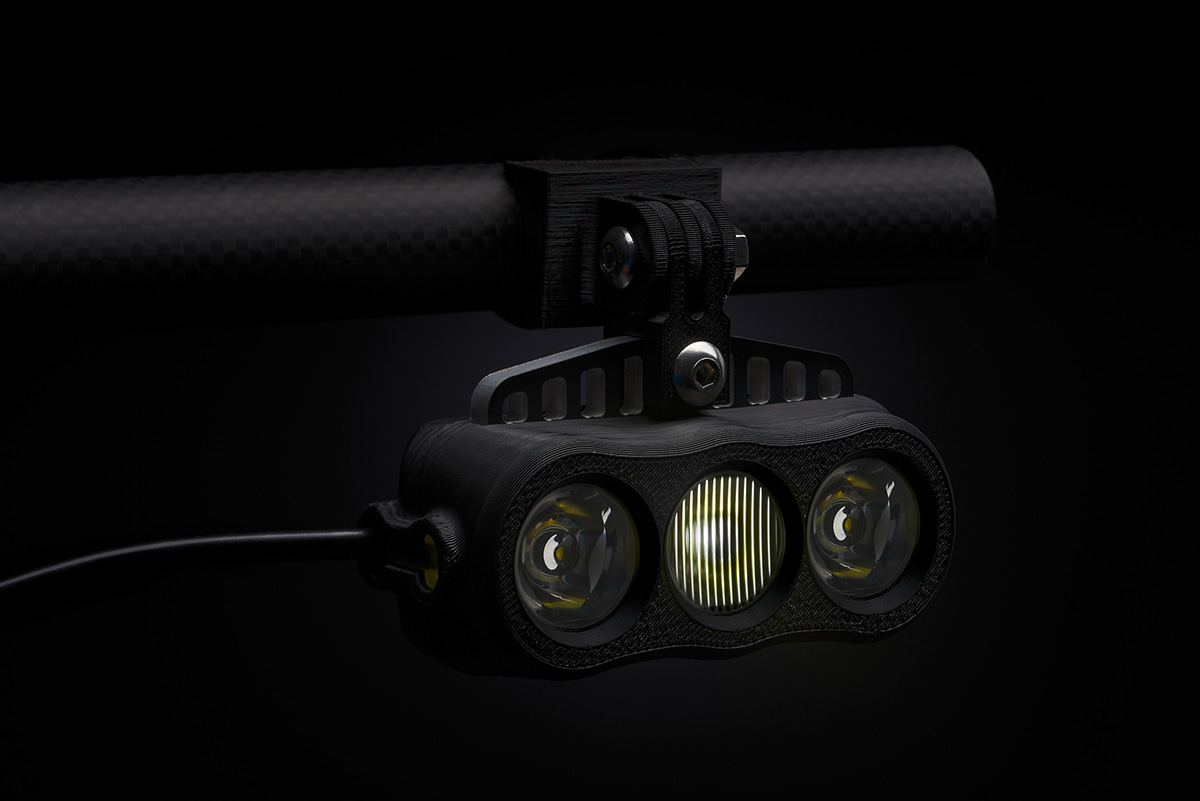Geared Up: K-Lite Bikepacker Ultra Dynamo Light
I reviewed K-Lite’s Bikepacker dynamo light several years ago. Since then Kerry Staite has continued to improve his products. Over time, the Bikepacker has gotten brighter and brighter. To take the next step forward in dynamo-powered lights, Staite went back to the drawing board. The result is the Bikepacker Ultra.
Like its predecessor, the Bikepacker Ultra is waterproof, shockproof, and dustproof. Overall power matches the current Bikepacker Pro V2 at 1,300 lumens (I tested the 1,200-lumen V1 version in 2016) but the big news is in the beam patterns.

The Ultra is offered in two versions. The one I used during my time on the Great Divide Mountain Bike Route was the Snow/MTB model. It has two flood optics and one spot optic, which produces a wide, even light that is great for technical riding and lower speeds. It highlights relief well, helping a rider avoid obstacles. As speed increases, the spot light activates to push light farther down the trail.
K-Lite Bikepacker Ultra, $230
The Gravel/Road model switches things up, employing a single flood optic and two spot optics to punch light farther down the road. With the expected higher speeds of road and dirt riding, it’s important that you don’t outrun your light. K-Lite’s answer to this makes a great deal of sense.

In both cases, at maximum output, the Ultra uses Cree LEDs to produce 1,300 lumens. But it also serves as a great illustration that there’s more to lights than simply output. Beam pattern and how that light is used is monumentally important.
A further update to the Ultra is a new mounting interface. The K-Lite now uses a common GoPro-style mount. This provides ample opportunities for creative mounting on cramped handlebars.
Also new on the Bikepacker Ultra are a set of side lights to increase visibility at intersections. A built-in standlight produces a mild amount of light while stopped. This is also nice at intersections and particularly helpful when setting up camp.
In the Field
I’ve used the Snow/MTB now for nearly a year with zero issues. I’ve also spent time on the Road/Gravel version. In both cases, I’m impressed. The heavy-duty wiring, tough light casings, great efficiency, and bright beams are built to last.
I will say that I typically use a helmet-mounted headlamp for an additional bit of easily directed light when I ride at night. The helmet light is also nice when digging through bags or in case of a puncture. For normal riding though, I keep that light off.
The K-Lite Bikepacker Ultra Snow/MTB produces great light at the lower speeds for which it is intended. While Staite recommends that model for the Great Divide, I think I prefer the Road/Gravel version for the dirt roads and fast descents of the route. It’s on singletrack or more technical riding where the Snow/MTB really shines (pun intended).

On the road, the Gravel/Road version does an amazing job of getting light out ahead of the bike. The only downside is if you have any unexpected tight turns. Much of the light is ahead of you and can make seeing into the corner a bit tough. This is where a helmet light can really help out. But that would be a shortcoming on nearly any light.

In both cases, I love the new mounting interface. It was far easier to get the light ahead of you so that even while standing to pedal, you aren’t experiencing glare.
Like K-Lite’s Bikepacker Pro model, the Ultra does not provide any accessory charging. If you want a single-package light and USB charger, check out Sinewave’s 750-lumen Beacon. But I would argue that the light produced by the K-Lite is not only more powerful but also more targeted. I also like the modularity of the K-Lite: there are times when you want a light and a USB charger, but other times you may only want USB charging, and so forth.
In terms of pricing, the K-Lite Bikepacker Ultra is cheaper than its predecessor at $230. But like the Bikepacker Pro, you’ll need to purchase a $65 switch and $125 USB charger if you want to charge accessories during daylight hours. This puts you at $420. Sinewave’s Beacon is a self-contained light, switch, and USB charger for $350, but it doesn’t have the punch of the K-Lite. Both are great options, but I will give the nod to the K-Lite for overall performance. And good performance ain’t cheap.

